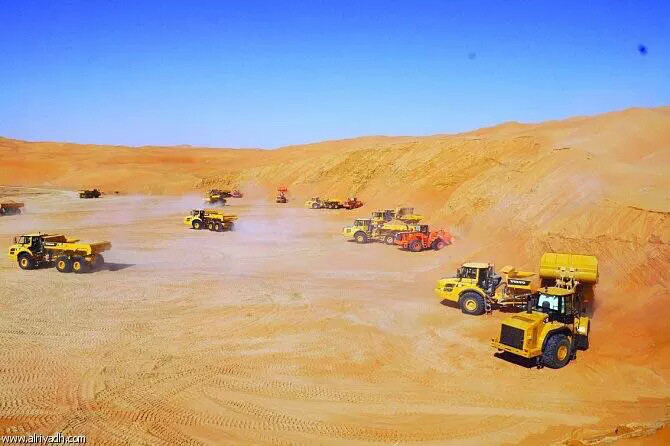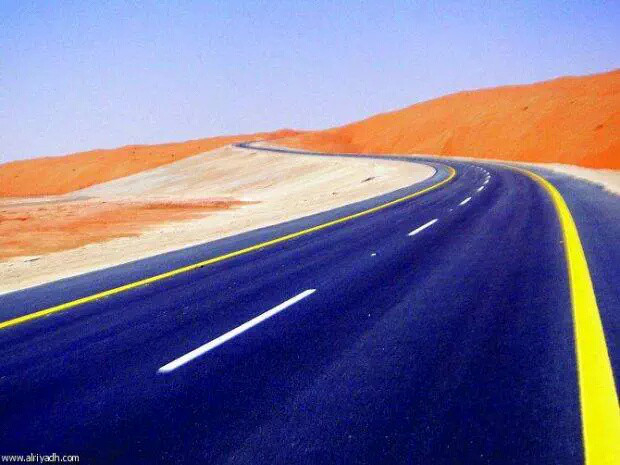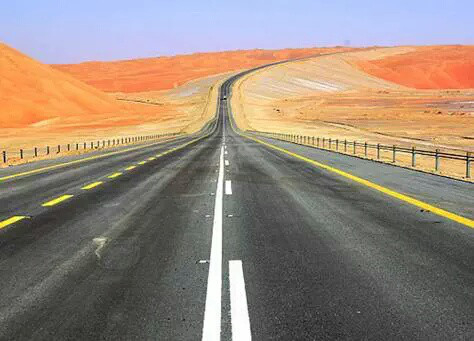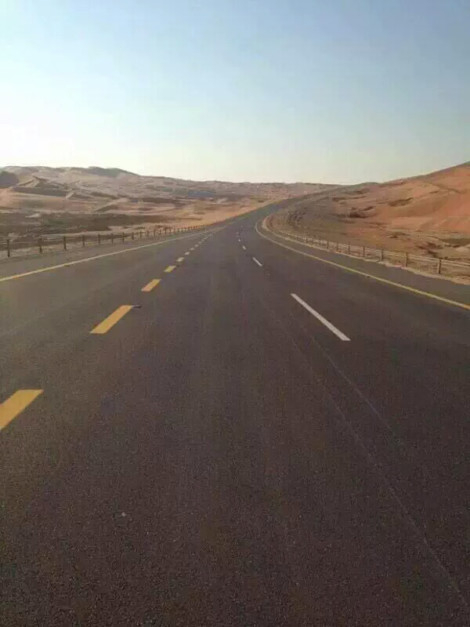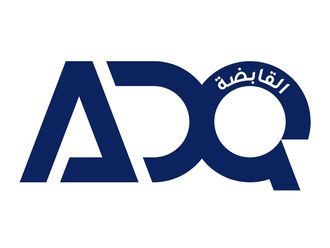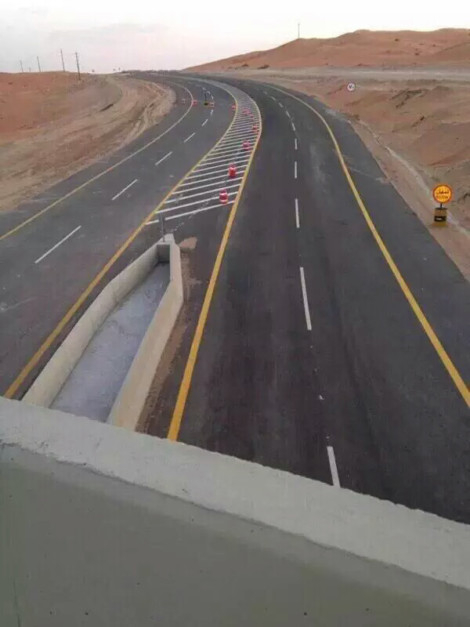
Muscat: The inauguration of a 680-kilometre long road linking Oman with Saudi Arabia is expected to be a historic milestone linking two of the biggest countries of the GCC by land for the first time ever.
The opening of the road, which will take place in October according to Saudi media, will create investment opportunities, boost tourism and business between the two countries, say officials and observers.
More than 200 million Omani riyals (Dh1.9 billion) have been spent by the Oman government on construction on its territory while the Saudi side has spent approximately one billion Saudi riyals.
The construction work on the road linking the two countries via the Empty Quarter was completed by the end of 2013, according to Omani authorities.
A 160-kilometre stretch of the road is in Oman, while 566 kilometres is in Saudi Arabia. In Oman, the road starts from Tanam area of Ibri province, passing through oilfields until it reaches the Oman-Saudi border in the Empty Quarter.
In Saudi Arabia, the stretch will link Haradh-Batha road with Al Shiba oilfield at a length of 319 kilometres and the stretch between Al Shiba and to the Omani border will be 247 kilometres.
The road has been called an “engineering marvel” as it is built through the moving sands of the vast Empty Quarter, the largest contiguous sand desert in the world, with an area of about 640,000 square kilometres. The project involved constructing sand bridges between high rising dunes, according to Famco, the Saudi contractor. 130 million cubic metres of sand was transported to construct the bridges. That, according to Famco, is equivalent to 26 pyramids.
Problems
The new road will cut the distance to Saudi Arabia by more than 500 kilometres. Currently, the distance between Oman and Saudi Arabia via UAE is nearly 2,000 kilometres.
It took Oman two-years to build the 160-kilometre stretch on its side while the Saudi authorities took four years to build the road on their side due to the longer distance and problems encountered in the moving of the sand.
Economic experts believe that the opening of new road will offer a vista of opportunities and boost trade and tourism.
Salim Al Hakmani, an economic expert, told Gulf News that the new road will enhance the volume of trade and economic exchange as goods can be traded without having to pay additional customs duties.
Al Hakmani added that additional revenues will be generated by attracting more investments in public services.
A significant growth is expected in the trade of cattle, cars as well as agricultural products.
Humaid Al Nasri, a member of the Shura Council, the elected advisory body representing Ibri, said the reduction of customs duties as per the agreements signed between the two countries under the Gulf Cooperation Council charter will further facilitate trade.
“The Omani-Saudi border will become a regional hub for goods’ transit with Duqm and Sohar ports being giving a much-needed push,” said Al Nasri.
Promote trade
Furthermore, Ali Saleh Al Kalbani, head of the Omani chamber for Commerce and Industry of Ibri province and a leading real estate company owner, told Gulf News that the creation of trade control measures at the borders will promote trade, and enhance investments in the industrial and tourism sectors.
Al Kalbani pointed out that the realty sector will flourish due to new investments.
With new investments, restaurants, hotels, petrol stations and other facilities will be created on both sides, adding to economic growth of the region, said Al Kalbani.
The road leading to the Empty Quarter passes through the main oil and gas production areas of the north of Oman as well as the GCC railway track, which will attract more investments and lead to economic integration of the countryside.
A road will be built soon to link Sohar and Ibri province and then to the new road, making it easier to transport goods to Saudi Arabia from Sohar port instead of going through Dubai and Qatar.
Sultan Al Abri, a Shura Council member, pointed out that it will take years to reap the benefits from the road as it is located in a very remote area where no services like petrol stations, restaurants, mosques and hotels exist today.
“Omanis will find it difficult to travel on the Omani-Saudi road with no services, ambulance points, no street light and the presence of stray animals like camels,” said Al Abri.
Visits
Ahmad Al Hinai, a sociologist, explained that the opening of the new road will enhance social integration of Omani families from Ibri province to their relatives in Al Ahsa of Saudi Arabia.
“I guess there will be more visits from both the sides with the new stretch coming into use. Now they will not need to cross the UAE borders in the future, said Al Hinai.
Naser Al Baloushi, owner of a Haj tour operator, told Gulf News that he would be delighted to drive on the new road but only after basic infrastructure along the route is completed as he does not want to compromise the safety of Haj travellers.
“It will significantly cut the distance between the two countries and the movement of pilgrims will be easier and faster in the future after the completion of the necessary infrastructure,” said Al Baloushi.
More than 100,000 Omani nationals go to Makkah for Haj and Umrah every year, taking buses or their own vehicles, according to the Ministry of Awqaf and Religious Affairs.
No security threat
Zakariyah Al Mahrami, security expert and a noted Omani researcher, told Gulf News that there will be no security threats on this route as Oman enjoys good relations with Saudi Arabia.
Al Mahrami ruled out any infiltration threat in the future as it’s very difficult to cross the Empty Quarter by stealth.
There would likely be security patrols on the Omani side round the clock, says Al Mahrami.
Al Mahrami also ruled out any political issues between the two countries behind the delay in building the road on the Saudi side.
Meanwhile, the Ministry of Transport and Communication has floated tenders for investment along the stretch for building integrated service stations on the Ibri- Empty Quarter road, leading to the border with Saudi Arabia.


